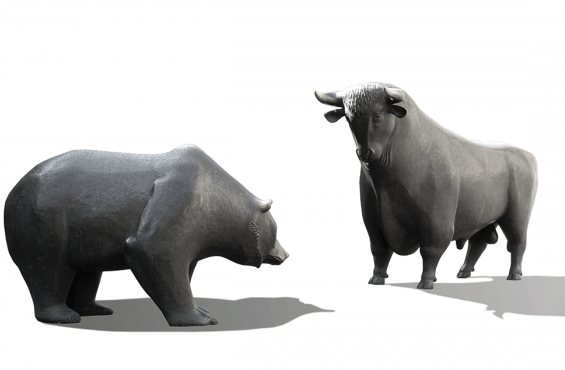Stocks around the world limped into the end of a dismal fourth quarter that saw bear markets in equities from Japan to Germany. Foreign markets had a particularly bad year. The S&P Europe 350 Index declined -14.7%, its biggest loss since the 2008 financial crisis, and the MSCI Emerging Markets Index slid -15.3%.
U.S. stocks held up better, finishing the year more than 5% off the lows thanks to a late surge. The S&P 500 was down -4.6%, the Dow Jones Industrial Average -3.7%, the Nasdaq 100 -0.1%, and the small-cap Russell 2000 -11.1%.
At the end of the third quarter, U.S. stock gains had been strong for nearly a decade. Now there is no asset class (except cash) with gains for 2018. The plunge pushed technology stocks to their worst quarter in a decade.
It feels like a pretty normal cyclical bear market….so far.
In our view, this feels like a pretty normal cyclical bear market likely triggered by investors’ realization that stock prices need to adjust lower to reflect the fact that global monetary authorities have scaled back the massive stimulus measures that have been in place over the last decade. After the longest bull run in history, we wouldn’t be surprised if things get a little worse before they get better.
Although investing can feel like gambling sometimes, stocks have real value. When you own stock funds, you own a share of great companies that produce cash flows in which you participate. However, public perception swings between fear and greed. When there is less fear, investors are less price sensitive (perhaps they are afraid to miss out on gains) and stocks get bid up. This eventually leads to weaker returns. When stocks fall, they eventually become bargains. It may feel like there is no bottom, but that’s simply not true. Volatility is normal and causes investors to be more selective with how their money is invested, which is ultimately a good thing.
This year, we celebrate 50 years of wealth management and in our half century of up and down markets, we’ve seen that risk management is critical to long-term success. More important than maximizing returns is making sure that you’ve built a portfolio that can meet your long-term objectives, set realistic expectations, and have a plan that can help you withstand even bear market conditions.
